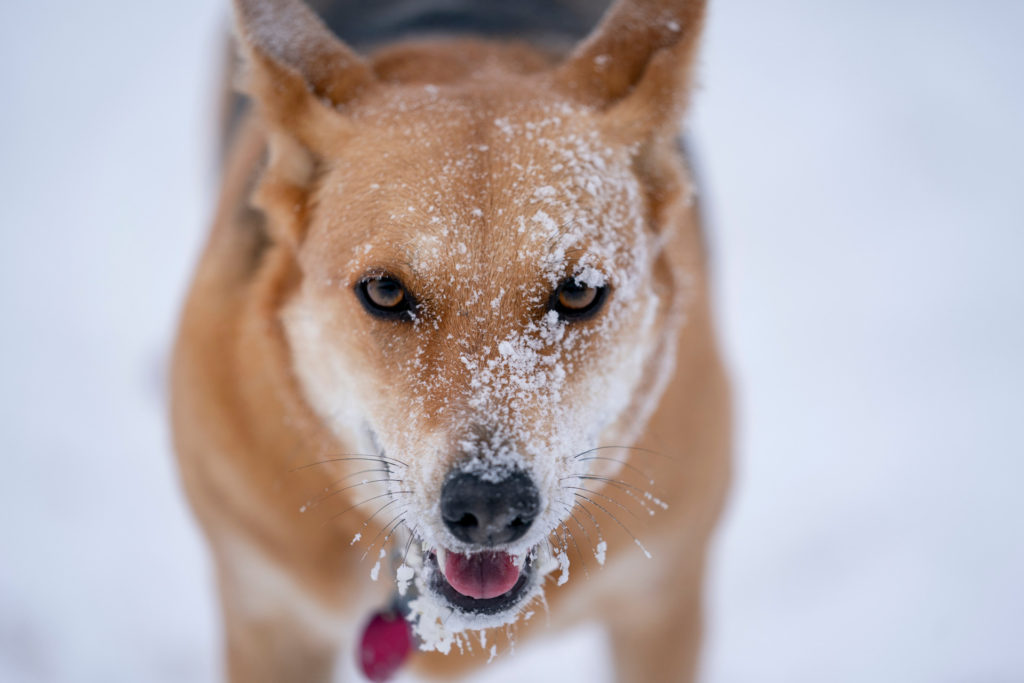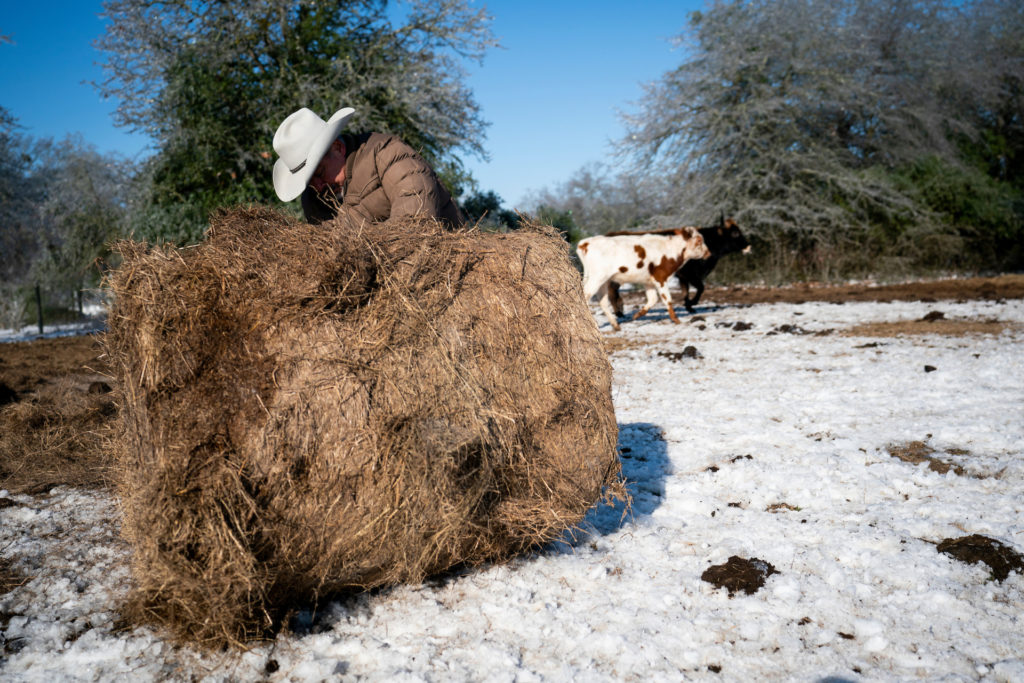Arctic blast forecast leading into Christmas
Experts provide tips on how to protect plants, pipes and pets
An arctic blast with sub-freezing temperatures forecasted prior to the Christmas holiday weekend prompts the need to protect plants, pipes and pets.

The National Weather Service is forecasting an arctic blast that will plummet temperatures below freezing beginning late evening Dec. 22 and continuing through Dec. 24 for much of Texas. The forecast calls for the coldest air since February 2021. Wind chills of single digits to below zero are forecast.
Though no snow or ice accumulations are anticipated, high wind gusts of 35 mph or higher are predicted and could lead to downed power lines.
Texas A&M AgriLife Extension Service experts have tips on how to protect your plants, pipes and pets. The AgriLife Extension Disaster Education Network has multiple resources for Texans to access and prepare for the potentially severe winter ice storm.
Protect your plants
Frosts and freeze can damage or kill exposed plants, especially those in containers, said AgriLife Extension horticulture program specialist, Lisa Whittlesey, Bryan-College Station. Damage can vary greatly among plant varieties, so cold-sensitive plants will require more protection than hardier plants.
Plants in containers are more susceptible to freezing temperatures because they lack the insulation the soil provides. They should be moved inside the home or garage — any space where temperatures will stay above freezing.

If container plants cannot be moved indoors, put them on the south side of the house, water them well and pile on mulch, leaves or hay to protect the roots and/or cover them with a frost blanket. Cold-sensitive landscape plants can also be covered with similar protection.
AgriLife Extension has a comprehensive take on protecting landscape plants and horticultural crops from frost and freezes.
When covering plants, drape them with cardboard or cloth material to the ground and secure it, she said. The idea is to trap enough warmer air escaping from the soil to protect plants from a killing freeze.
Stringing holiday lights around sensitive plants and covering them with a tarp can provide protection from light freezes, she said.
Watering plants and making sure they are not drought-stressed before freezing temperatures arrive can help, Whittlesey said. Watering just before the freeze can also help because water creates warmth and loses heat slowly.
“Drought-stressed plants are more susceptible to the cold,” she said. “And if you can’t bring a plant inside, the best option is to cover them and remember to place them in a location that gets ample sunlight and to water them.”
Protecting pipes
When it comes to freeze damage to homes, protecting exposed pipes is critical when temperatures dip below freezing. AgriLife Extension provided tips for preventing and thawing frozen pipes during severe weather.

Joel Pigg, AgriLife Extension program specialist and Texas Well Owner Network coordinator, Bryan-College Station, said homeowners should protect pipes around the house or in wellhouses now while the weather is good.
“It’s best to act early, rather than when the storm is coming in,” he said. “Prepare now because supplies of insulation and parts might be limited during a rush for items needed to protect pipes just before freezing temperatures arrive.”
Water pipes can freeze and burst when the outside temperature reaches 20 degrees or below, but Pigg said take precautions anytime temperatures dip below freezing. Pipes with northern exposure face increased risk of freeze.
Exposed pipes, including outdoor faucets, water sprinklers, water pipes in basements, crawl spaces, attics or garages, pipes that run along exterior walls, swimming pool supply lines and well houses are especially susceptible to freezing temperatures.
Outdoor water systems should be drained and covered or allowed to drip slowly to help protect from damage, he said.
Products made to insulate water pipes like sleeves, insulation or heat tape should be applied to exposed water pipes. Many products are available at local plumbing supply retailers. Newspaper can also provide some protection to exposed pipes as long as exposure is not prolonged.
Foam faucet covers also add protection to an area susceptible to freezing, he said.
“Covers are around $4, and insulation or heat tape are very inexpensive relative to paying for repairs,” he said. “Adding protective elements to any weak points is a good investment against short-term freezes.”
Leaving water running slightly does help during prolonged events, and heat lamps to raise temperatures in lesser-insulated spaces with pipes like well houses or basements can help prevent breaks, he said.
“Insulating exposed pipes goes a long way to protect for a few hours of freezing temperatures but draining pipes inside the home is easy and draining pipes to any well head is a good idea when freezes are prolonged,” he said. “Winter Storm Uri was an exception. Weeklong freezing temperatures and rolling power outages only compounded the problems for a lot of Texans.”
Protect livestock and pets
Farm animals and pets require extra attention when it is cold outside. Most livestock species are adaptable, however, it’s important to provide animals shelter to protect them from cold, blustery and wet conditions. Once a shelter is in place, maintaining the area can ensure animals stay healthy.

The Texas A&M Veterinary Medical Diagnostic Laboratory, TVMDL, experts advise keeping outdoor animals bedding replaced will ensure they have an excellent place to escape the winter elements. Along those same lines, make sure that clean, adequate water supplies are available and will be easy to maintain during freezing conditions.
Energy and protein are important levels to evaluate during a cold winter, which includes high calorie food for companion animals as well as quality forage for livestock. TVMDL experts advise evaluating forage before offering it to livestock.
Additional tips for pets are offered by American Humane:
- Leave your pets’ coats a little longer in the winter to provide as much warmth as possible.
- Keep your pets inside, both during the day and night.
- If dogs must be left outside for any period of time, they should have a draft-free shelter large enough to stand and turn around in, yet small enough to retain body heat. Use a layer of straw or other bedding material to help insulate them against the cold. Make sure the entrance faces away from the incoming wind and snow.
- Keep your cats indoors. Sometimes cats left outdoors in cold weather seek shelter and heat under the hoods of automobiles and are injured or killed when the ignition is turned on. Banging loudly on the hood of your car a few times before starting the engine will help avoid a tragic situation.
- Salt and de-icers: Many pets like to go outside to romp and stomp in the snow, but people use powerful salt and chemicals on their sidewalks to combat ice buildup. Thoroughly clean your pets’ paws, legs and abdomen after they have been outside, to prevent ingestion of toxic substances and to prevent their pads from becoming dry and irritated. Signs of toxic ingestion include excessive drooling, vomiting and depression.
- Ice and snow: When you let your pets in from a walk or a romp outside, make sure to wipe their paws and undersides — get those ice balls off as soon as possible, as they can cause frostbite. After being outside, check your pets’ paws, ears and tail for frostbite. Frostbitten skin usually appears pale or gray and can be treated by wrapping the area in a dry towel to gradually warm the area. Check with your veterinarian if you suspect frostbite.
- Use nontoxic antifreeze. Antifreeze is great-tasting to pets, but even a very small amount ingested can be deadly. Look for “safe” nontoxic antifreeze, consider using products that contain propylene glycol rather than ethylene glycol, and make sure all spills are cleaned up immediately and thoroughly. Contact your veterinarian immediately if you suspect your pets have ingested any antifreeze!


